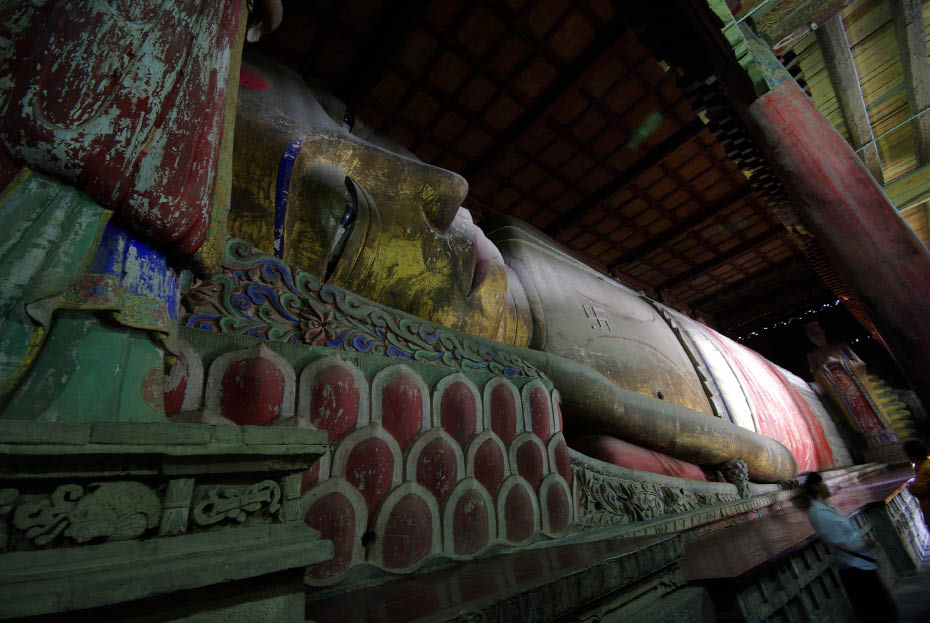Zhangye City – A Rose in the Desert
By staff reporter LI GUOWEN
ZHANGYE is an ancient city where people of different ethnic groups and divergent cultures have converged during its long history. It lies in the middle of the Hexi Corridor in Gansu Province and is located on the Old Silk Road along which merchants from the East and the West traveled for centuries, toting their wares and their cultures. The city of Campichu, where Marco Polo (1254-1324) claimed to have spent a year, has been identified as Zhangye, testament to the city’s position as a meeting point of the ancient world.
The city has an average precipitation of just 130 mm, but, on the way from Lanzhou to Zhangye, we passed lush fields of a type seldom seen in this parched province, or even in China’s north in general. This is Zhangye’s oasis and why the city is home to two national nature reserves. After driving through its verdant landscape, we arrived in Zhangye at dusk, dazed by this anachronistic scenery. We checked in to our hotel, ate our fill of local specialties, and planned the days ahead.
 |
|
The largest indoor sleeping Buddha in Asia housed in the Giant Buddha Temple. |
The Giant Buddha Temple
Early next morning we visited the Giant Buddha Temple, where, according to our guide, Kublai Khan (1215-1294), founder of the Yuan Dynasty, was born. Marco Polo often visited the temple during his stay in the city. It is best known, however, for housing China’s largest reclining Buddha statue.
The statue shows the Sakyamuni lying on his side in the Nirvana position. The Buddha, in the center of the hall, is 34.5 meters long and his shoulders are 7.5 meters across. His stylistic elongated ears stretch four meters and could accommodate eight people sitting side by side. A person could lie happily on his humongous middle finger. His feet would need shoes a whopping 5.2 meters long.
To build a Buddha of such magnitude, craftsmen had to bring together techniques from architecture, clay sculpture and other arts. A huge frame of wood, bigger than a large house, first had to be constructed. Workers then nailed boards to the frame and covered it with clay which they molded into the fine features of the Buddha. The last step was to decorate the statue with colorful pigments. The result is something that is simply awe-inspiring.

